




An Environmental Product Declaration, or EPD, is a standardised and verified way of quantifying the environmental impacts of a product based on a consistent set of rules known as a PCR (Product Category Rules).
The EPD owner has the sole ownership, liability, and responsibility for the EPD. EPDs within the same product category but from different programmes may not be comparable. EPDs of construction products may not be comparable if they do not comply with EN 15804.
EPDs within the same product category but registered in different EPD programmes, or not compliant with EN 15804, may not be comparable.
The results for EN15804+A1 compliant EPDs are not comparable with EN15804+A2 compliant studies as the methodologies are different. Results that are EN15804+A1 compliant are given in an annex to this document to assist comparability across EPDs.
Declaration owner:
Geographical Scope
Reference
EPD produced by:

Regional Program:

EPD programme operator:
APL Window Solutions
Web: https://www.aplnz.co.nz/
Email: marketing@aplnz.co.nz
Post: 19 Northpark Drive, Hamilton 3241, New Zealand
New Zealand
01 July 2020 - 30 June 2021
thinkstep Ltd
Web: http://www.thinkstep-anz.com
Email: anz@thinkstep-anz.com
Post: 11 Rawhiti Road, Pukerua Bay, Wellington 5026, New Zealand
EPD Australasia Limited
Web: http://www.epd-australasia.com
Email: info@epd-australasia.com
Post: EPD Australasia Limited, 315a Hardy Street, Nelson 7010, New Zealand
EPD International
Web: https://www.environdec.com
Email: info@environdec.com
Post: EPD International AB, Box 210 60, SE-100 31 Stockholm, Sweden
Chair: Claudia A. Peña. Contact via info@environdec.com
Independent verification of the declaration and data, according to ISO 14025:
Third party verifier:
John Andrews
Toitū Envirocare
John.Andrews@toitu.co.nz
Verifier approved by: EPD Australasia
Procedure for follow-up of data during EPD validity involved third-party verifier



APL Window Solutions (APL) is the largest window solutions organisation in New Zealand and has been proudly familyowned and NZ Made for over 50 years. We’ve grown alongside our manufacturers to bring quality architecture and building to every corner of the country.
Since 1971, APL have been successfully designing, developing, testing and manufacturing window and door systems for our three brands: Altherm Window Systems, First Windows & Doors and Vantage Windows & Doors.

We take huge pride in our track record of supplying window and door solutions for New Zealand home and building owners. Everything we manufacture is designed and tested specifically for New Zealand conditions. Our Centre of Innovation houses our dedicated research, development and testing facility where our products are developed for our country’s unique landscape, coastlines, weather patterns and design aesthetics. Part of our commitment to designing for New Zealand is designing and operating in a way that reduces our environmental footprint.
We supply independently-owned manufacturers, all over the country, as well as in some areas of the South Pacific. These dedicated operators work on a wide variety of residential and commercial projects and are the exclusive suppliers of APL products through our three brands: Altherm, First and Vantage. They share our commitment to excellence and our spirit of innovation.
APL is proudly part of the Profile Group of businesses. Profile Group represents a family of businesses that together form New Zealand’s only integrated supply chain for aluminium window and door solutions.
The key to keeping things simple is to keep them seamless – the one-stop-shop approach. As we’ve grown, we’ve developed an end-to-end service for our customers that covers every major step in the process, from extruding the aluminium to delivering our systems and parts directly to manufacturers all over New Zealand. Our eco-system of businesses work together to shape a better future for all.

INEX (independent Extrusions) is the largest extruder of aluminium in New Zealand, supplying aluminium for approximately 70% of New Zealand’s windows and doors. INEX is the first step within our group’s end-to-end operations.
Colour Works has three powdercoat lines and is continuously exploring new methods of coating aluminum extrusion for NZ. These powdercoat lines are designed as a seamless step within the group’s manufacturing processes.
Finishing Excellence (FINEX) is our on-site anodising plant and is the most modern facility of its kind in New Zealand. Ensuring the highest finishing quality in all our window and door solutions made for New Zealand.
APL Window Solutions (APL) is NZ’s largest window solutions organisation – known for high quality products that are designed, developed, tested, and manufactured in, and specifically for NZ buildings and conditions. APL serves our fabricator network with Altherm, First and Vantage Windows & Doors product.
APL Manufacturing houses NZ’s largest Aluminium Entrance Door manufacturing unit, extensive priority hardware assembly and a wide range of CNC fabricated accessory products. Essential for manufacturing the industry’s niche product for APL customers.
PPL Plastic Solutions specialise in the design and manufacturing of both flexible and rigid profile extrusions, and injection moulded parts, supplying a variety of market sectors. PPL solutions are used in products across the group, and in our reusable packaging systems.
Architectural Glass Products (AGP) is a state of the art, double-glazing manufacturing business, created to complete the end-to-end supply chain solutions within Profile’s Group. Glass is integral to any window solution and AGP enables us to offer the most advanced glass technology.
APL Direct maintains a fleet of purposedesigned trucks with the highest of environmental standards and optimised management. APL Direct distributes all product and componentry to our networks across the country on behalf of Profile Group’s businesses.


Together - we design, make and deliver end - to - end solutions for New Zealand environments.

Reducing our impact on the environment and our communities is right at the heart of what drives us and our ambition for the future. We’re on a journey to reimagine how we can improve this in every way.
Because we know the choices we make today, directly impact the future of our environments tomorrow.


99.9% unused aluminium is recycled back at smelter
>800,000

Takapoto Estate (another Profile Group subsidiary company and carbon offset venture) have planted over 800,000 native trees across the Waikato to date. A further 40k trees have been planted as part of our staff restoration projects
we have a chromate free powder coating process

-203,520m
Reusable pallet cover solution - eliminating 1.5tons of plastic wrap from landfill annually (reductions occur from 2022).
-70%
We have eliminated 70% of plastic wrap from our packaging, using paper alternative

96% of our fleet is rated Euro 5 or better and 55% of our fleet is now rated Euro 6 - the highest rating available for exhaust emissions


Profile Group acquires renewable energy certificates from Kawatiri Energy making the groups electricity usage carbon neutral. This further cements the company’s investment to lock in the collaboration by taking up a shareholding in Kawatiri Energy
Profile Groups partnership with Sanctuary Mountain Maungatuatari enables an NZ first with the issue and purchase of Biodiversity Units to enhance conservation management.


We’re making the shift towards a circular economy
Nearly half of the world’s total emissions are a consequence of the linear way we make, use and dispose of materials and products and less than 9% of the resources we use to build the world around us are cycled back for reuse. As industry leaders and innovators, we have both the opportunity and responsibility to address the rising need for largescale, sustainable change. For us, this starts at the design stage or as we like to think of it now, the redesign stage. We’re closing the loop on material flows, designing waste and pollution out of our system and with our commitment to regenerating our natural environments we aim to put product in to your home or building that has made zero impact on our beautiful country.
A more measured existence is a commitment to leaving the world better than we found it
You can’t manage what you don’t measure so we have teamed up with organisations and tool providers like ThinkStepanz and Toitū Envirocare to understand the life cycle of our products and our footprint, Circular IQ for the use of their Circular Transition Indicator (CTI) tool to improve our circular performance as well as becoming Declared through the International Living Future Institute. Measuring as many aspects of our business as we can to understand, track and prove progress on our environmental targets has become key for us and something we are pretty proud of.

We’re
always looking forward & always improving today for the future of the environments we shape, share, make and live in.
Nationwide
While our headquarters are in the Waikato, our extensive network of branches, staff and manufacturers spreads across Aotearoa.

Profile
APL Window Solutions
Colour Works
FINEX
INEX
APL Manufacturing Hautapu, Cambridge
PPL Plastic Solutions
AGP Architectural Glass Products Hautapu, Cambridge
APL Direct
Aitken Joinery
Gore
Alutech Windows & Doors Sockburn
Ascot Aluminium Wiri
Bay Aluminium Kerikeri
Central Aluminium Stratford
Composite Joinery Warkworth
Counties Aluminium Papakura
Danevirke Glass & Aluminium Dannevirke
Dargaville Aluminium & Glass Dargaville
Design Windows Vantage Christchurch
Envision Aluminium Blenheim
Evolution Windows Ltd Lower Hutt
Glenns Glass & Aluminium Whakatane
Glenns Glass Rotorua Rotorua
Hagley Windows And Doors Christchurch
Hopkins Joinery Putaruru
Huntly Joinery Window Systems Huntly
Insite Nelson
Lancer Aluminium Limited Partnership Henderson
ICM Aluminium Ltd Henderson
Metro Windows And Doors Levin Levin
Monarch Aluminium Woolston
Nichol Glass & Aluminium Greenmeadows
NZ Windows Coromandel Whitianga
NZ Windows Hamilton Hamilton
NZ Windows Tauranga Tauranga
NZ Windows Wellington Porirua
Phoenix Windows & Doors Whangarei
Regal Aluminium Frankton
Reids Joinery Mosgiel
Seymour Windows & Doors Ltd New Plymouth
Summit Windows & Doors Ltd Wiri
TRT Builders Westport
Vantage Windows Glenfield
Vantage Aluminium Oamaru Oamaru
Vision Windows Takanini
Wight Aluminium Whanganui
Fabricator Businesses
Altherm Canterbury Christchurch
Alitech Residential Waihi
Alitech Architectural Waihi
Altherm Window Systems Palmerston North
Altherm Napier Napier
Altherm Aluminium Northland 2018 Ltd Whangarei
Altherm Taranaki New Plymouth
Altherm West Joinery Henderson
Apex Windows Taupo
Dawson Aluminium Blenheim
Door & Window Systems Auckland Ltd Penrose
Design Windows Central Cromwell
Design Windows Nelson Stoke
Design Windows West Coast Greymouth
NT Joinery Ltd Te Awamutu
Phoenix Windows & Doors Auckland
Phoenix Windows & Doors Auckland
Premier Aluminium Drury
View Master Auckland
Westview Aluminium Upper Hutt
Aluminium City Penrose
Bernie Walsh Aluminium Dannevirke
CBD Windows And Doors Ltd Penrose
Epic Aluminium Mt Maunganui
Franklin Aluminium Pukekohe
First Christchurch Windows & Doors Papanui
Arthur Brown Construction Hawera
First Windows Taupo Taupo
First Windows & Doors Whangamata
Hollings First Aluminium Masterton
Kaiapoi Aluminium Belfast
Kaitaia Glass & Aluminium Kaitaia
Kennedy Aluminium Timaru
Metro Windows And Doors Palmerston North
North Shore Joinery Ltd Silverdale
Wight Aluminium Waikato Te Rapa
Twin City Aluminium Napier

Whangarei Aluminium Whangarei
Wellington Windows & Doors Porirua
Windowmakers Silverdale
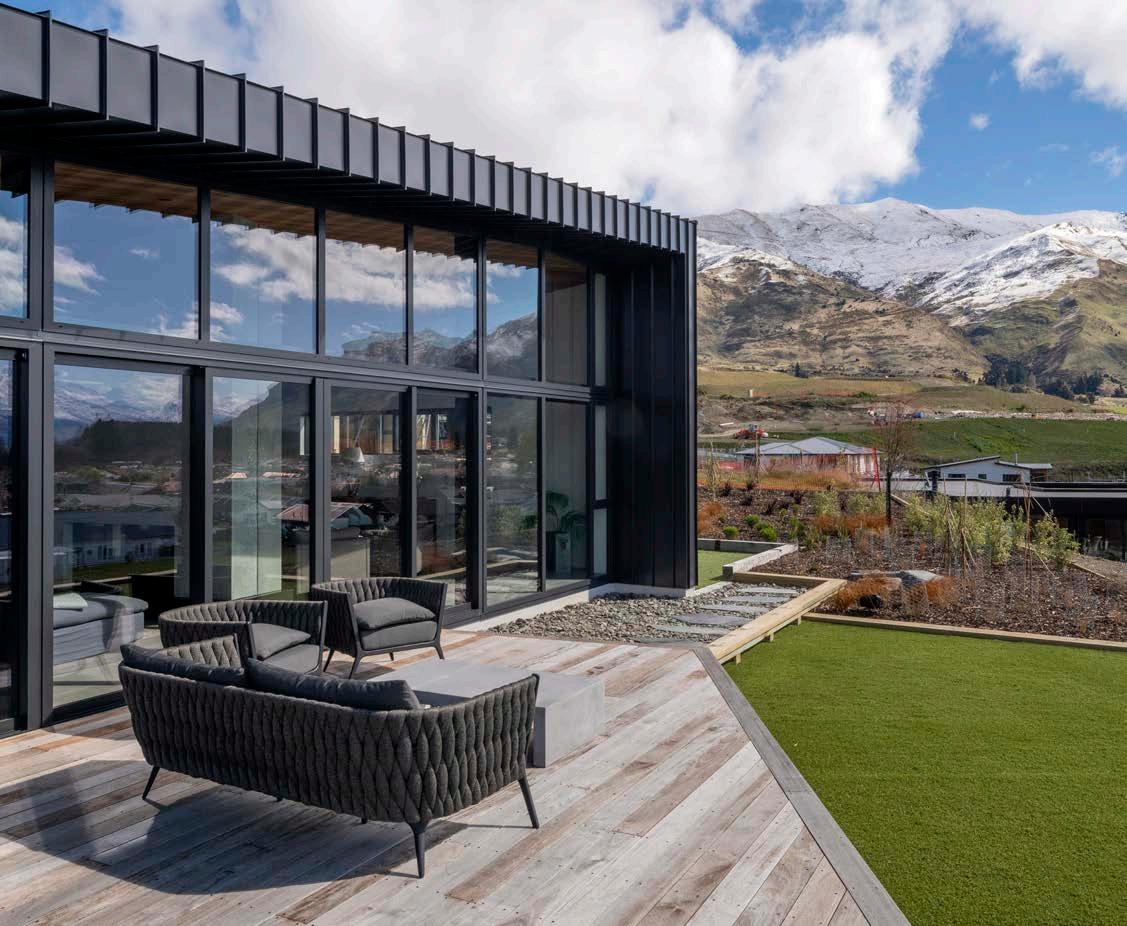

This Environmental Product Declaration covers a total of 16 APL aluminium windows and doors assembled from extruded coated/anodised aluminium profiles with thermal breaks.
These products span across three product ranges:
Residential Series ThermalHEART®
Metro Series ThermalHEART®
Commercial Series
The following subsections provide more details of each product range.


APL’s Residential Series ThermalHEART® is a mainstream suite of thermally efficient windows and doors suitable for a range of residential projects. A polyamide insulator is included in every ThermalHEART® extrusion which acts as a thermal break. The Series contains a full product portfolio including awning, sliding, and bi-folding windows, as well as sliding, hinged, and bi-folding doors.


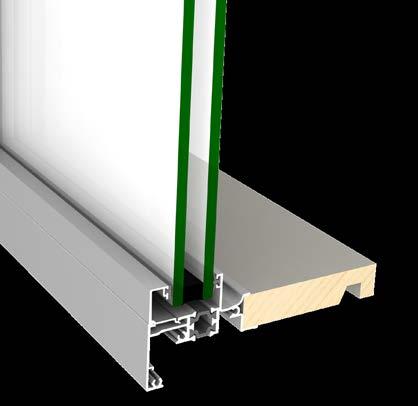
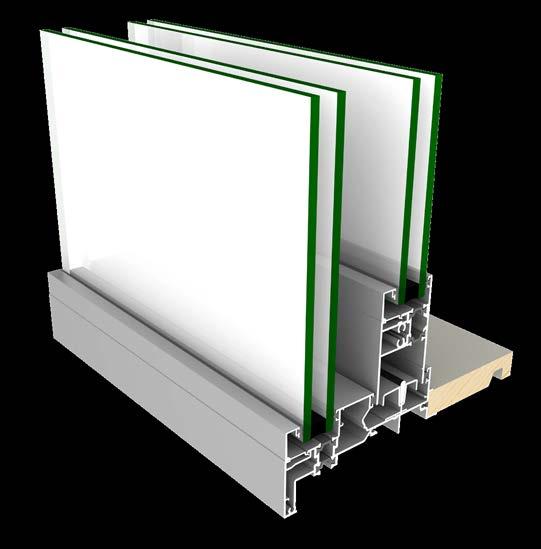
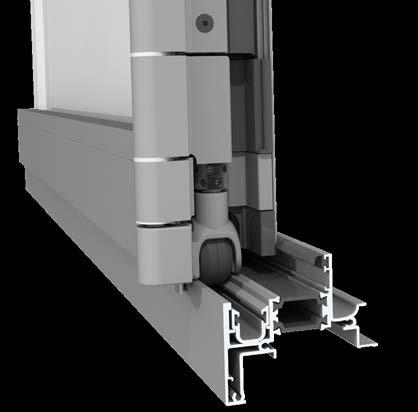
Specifications
Dimensions
Awnings 1400mm high x 1000mm wide; casements 1400mm high x 800mm wide. May be restricted by weight and wind zones
Maximum Glass Thickness
24mm IGU as standard, but 32mm IGU possible
Thermal Values
Complies with the Construction R-values provided in NZBC clause H1, Appendix E, table E1.1.1.
Performance
Tested to Extra High wind zone
Specifications
Dimensions
Recommended maximum 1800mm high x 1500mm wide panels in Extra High wind zones. For larger panels consult your window manufacturer
Maximum Glass Thickness
24mm IGU as standard, but 32mm IGU can be used with a wedged bead
Thermal Values
Complies with the Construction R-values provided in NZBC clause H1, Appendix E, table E1.1.1.
Performance
Tested to Extra High wind zone
Specifications
Dimensions
Recommended maximum panels of 1800mm high and 900mm wide
Maximum Glass Thickness
24mm IGU as standard, but 32mm IGU can be used with a wedged bead
Thermal Values
Complies with the Construction R-values provided in NZBC clause H1, Appendix E, table E1.1.1.
Performance
Tested to Extra High wind zone
Specifications
Dimensions
Recommended maximum panels of 2200mm high and 1500mm wide
Maximum Glass Thickness
24mm IGU as standard, but 32mm IGU can be used with a wedged bead
Thermal Values
Complies with the Construction R-values provided in NZBC clause H1, Appendix E, table E1.1.1.
Performance
Tested to Extra High wind zone
Specifications
Dimensions
Recommended maximum panels of 2200mm high and 900mm wide
Maximum Glass Thickness
24mm IGU as standard, but 32mm IGU can be used with a wedged bead
Thermal Values
Complies with the Construction R-values provided in NZBC clause H1, Appendix E, table E1.1.1.
Performance
Tested to Extra High wind zone
Specifications
Dimensions
Recommended maximum panels of 2200mm high x 900mm wide
Maximum Glass Thickness
24mm IGU as standard, but 32mm IGU can be used with a wedged bead
Thermal Values
Complies with the Construction R-values provided in NZBC clause H1, Appendix E, table E1.1.1.
Performance
Tested to Extra High wind zone


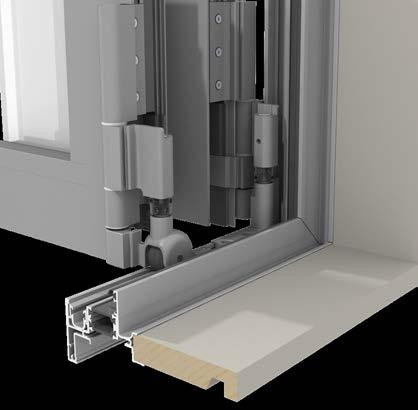
APL’s Metro Series ThermalHEART® is a thermally efficient range of windows and doors suitable for large residential projects. A polyamide insulator is included in every ThermalHEART® extrusion which acts as a thermal break. The Series contains a full product portfolio including awning, sliding, and bi-folding windows, as well as sliding, hinged, and bi-folding doors.


Specifications
Dimensions
Awning and casement windows have a recommended size of 1400 mm high x 800mm wide
Maximum Glass Thickness 44mm IGU
Thermal Values
Complies with the Construction R-values provided in NZBC clause H1, Appendix E, table E1.1.1.
Performance
Tested to Extra High wind zone
Specifications
Dimensions
Metro Series ThermalHEART® sliding windows can be made to large door-size panels if needed, because they are based on the sliding door system. Panels 2000mm high x 1500mm wide would conform
Maximum Glass Thickness 44mm IGU
Thermal Values
Complies with the Construction R-values provided in NZBC clause H1, Appendix E, table E1.1.1.
Performance
Tested to Extra High wind zone
Specifications
Dimensions
Because they use the bi-fold door system, windows can be built to tall heights with a recommended panel size of 2000mm high by 900mm wide
Maximum Glass Thickness 44mm IGU
Thermal Values
Complies with the Construction R-values provided in NZBC clause H1, Appendix E, table E1.1.1.
Performance
Tested to Extra High wind zone
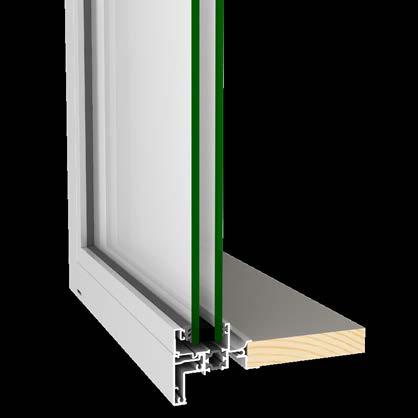


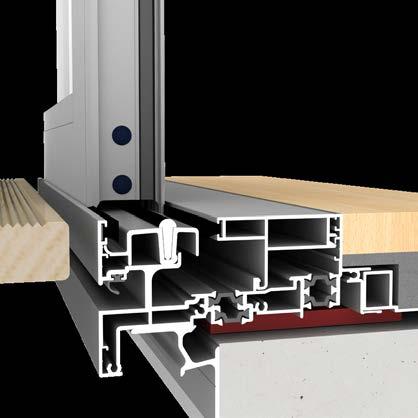
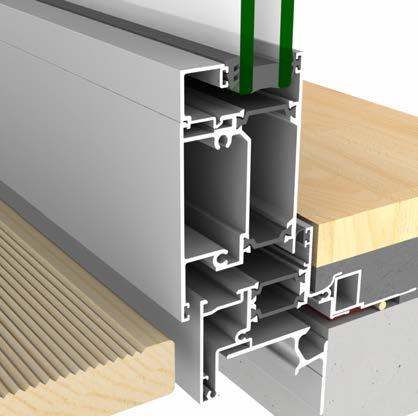

Specifications
Dimensions
Recommended maximum panels of 2700mm high by 1500mm wide
Maximum Glass Thickness 44mm IGU
Thermal Values
Complies with the Construction R-values provided in NZBC clause H1, Appendix E, table E1.1.1.
Performance
Tested to Extra High wind zone
Specifications
Dimensions
Recommended maximum panels of 2700mm high and 900mm wide
Maximum Glass Thickness
44mm IGU
Thermal Values
Complies with the Construction R-values provided in NZBC clause H1, Appendix E, table E1.1.1.
Performance
Tested to Extra High wind zone
Specifications
Dimensions
Recommended maximum panels of 2700mm high by 900mm wide
Maximum Glass Thickness
44mm IGU
Thermal Values
Complies with the Construction R-values provided in NZBC clause H1, Appendix E, table E1.1.1.
Performance Tested to Extra High wind zone
APL’s Commercial Series is a range of windows and doors suitable for commercial buildings. The Series covers window systems for low-rise to high-rise buildings and door systems for a wide variety of entranceway's.




Specifications
Dimensions
Awning windows up to 1600mm high x 1000mm wide, casements 1600mm high x 800mm wide (larger possible depending on width, height, weight and hardware)
Maximum Glass Thickness 28mm IGU
Thermal Values
Consult APL Technical Department
Performance
Tested to Extra High / Specific Design wind zones. Projects may require project specific testing
Specifications
Dimensions
Sliding doors recommended maximum panels 2700mm high and 2400mm wide. Hinged doors recommended maximum panels 2700mm high and 1000mm wide
Maximum Glass Thickness 27mm IGU
Thermal Values
Consult APL Technical Department
Performance
Tested to Extra High wind zones

This is a ‘cradle-to-gate’ type EPD with Modules C1–C4 and Module D added. This means that the production (Modules A1–A3), end-of-life (C1-C4) and recovery (D) stages are modeled in this EPD. The installation processes (Modules A4-A5) and use stages (Modules B1-B7) are not modeled.
The production stage involves the extraction of all raw materials, transport to the APL production facility, and the manufacturing of these materials to make windows and doors ready to be distributed to customers (gate). The end-oflife stage includes demolition/deconstruction of the building, transport of wastes, and treatment of wastes.
The windows and doors declared in this EPD are made from an aluminium extrusion frame, enclosing. The composition of APL windows and doors is in Table 2, as per EN15804 requirements.
None of the materials in this EPD are on the Candidate List of substances of very high concern (SVHC), by the European REACH Regulation at a concentration greater than 0.1% by mass.
sealant - Toptec sealer (Acrylflex)
EPDs that do not cover the full product life cycle from raw material extraction through to end-of-life use the term “declared unit”, rather than functional unit. “Declared unit” will be used in the EPDs themselves and is defined as: 1 m2 of window or door, normalised from standard window sizes.
In Life Cycle Assessment (LCA), the system boundary is a line that divides the processes which are included from everything else. The system boundary of this EPD includes production (‘cradle-to-gate’, Modules A1-A3), end-of-life (Modules C1-C4) and the recovery potential of the window/door materials (Module D) - as illustrated in Table 5 below.
Aluminium extrusion profiles are processed from aluminium ingot from the Tiwai Smelter in Southland (New Zealand), using hydraulic extruders. These extrusions undergo a surface finishing process, which can be either powder coating or anodising.
Insulated glass units (IGUs) are manufactured by Architecture Glass Products (AGP) - a New Zealand-based supplier, who manufactures IGUs using imported glasses from Indonesia and Belgium. Hardware fittings (such as hinges, handles, screws), gaskets/seals, and sealants required for the final window/door assembly are sourced from a mix of New Zealand and overseas manufacturers - mainly from China and Taiwan.
All these components - aluminium extrusions, IGUs, hardware fittings, gaskets/seals, and sealants, are then distributed to fabricators across New Zealand and in the South Pacific (Fiji, Rarotonga, Samoa, and Tahiti), through individual distribution networks. Once there, the extrusions are fitted with IGUs and other hardware fittings to form a full window/door assembly, which is installed into residential and commercial buildings.
Modules A1-A3 represent the manufacturing and packaging of aluminium extrusion profiles (including extraction and processing of raw materials and the transport to manufacturing site), manufacturing of the rest of the components of the window/door (IGU, hardware fittings, gaskets/seals, and sealants), transportation of these components, and window assembly (aka fabrication). Packaging of windows is also included.
These modules also include the generation and transmission of electricity in New Zealand, generation of thermal energy from natural gas, generation of liquid petroleum gas, supply of water, and solid waste and wastewater management.
Table 5: Modules of the production life cycle included in the EPD (X =
Variation –products N/A
Variation - sites N/A
**0.48% of APL windows and doors are shipped to and fabricated in the South Pacific - Fiji, Rarotonga, Samoa, and Tahiti. Hence, a weighted average distance between APL manufacturing site and fabricators is considered.
Module C1 (deconstruction/demolition) includes demolition of the whole building including a window/door using mass allocation, based on a 100-kW construction excavator.
Module C2 (transport to end-of-life) includes transport of waste window/door to waste management facilities, following building demolition.
Module C3 (waste processing) includes the processing of window/door waste for reuse or recycling.
Module C4 (disposal) includes window/door end-of-life which is a combination of landfill and recycling.
Module D (reuse-recovery-recycling-potential) includes recovered aluminium and stainless steel scraps that are fed into a second life cycle. This module is modeled considering the avoided virgin aluminium and stainless steel production in New Zealand. Also, the energy recovered from landfill is accounted for.
Primary data was used for all manufacturing operations up to the factory gate, including upstream data for aluminium extrusion and finishing (powder coating and anodising). Primary data for aluminium extrusion, finishing, hardware component manufacturing (including seals), and fabrication was sourced for the period 01 July 2020 to 30 June 2021.
Background data was used for input materials sourced from other suppliers such as glass, components, and packaging materials.
All data in the background system were from the GaBi Professional Life Cycle Inventory Database 2022 (Sphera, 2022). Most datasets have a reference year between 2017 and 2021 and all fall within the 10-year limit allowable for generic data under EN 15804 and the PCR.
With the exception of energy and water use (which correctly reflect New Zealand conditions), minor upstream (supply chain) data used was European/Canadian due to a lack of consistent LCI data for New Zealand at the time this study was conducted – for example, aluminium ingot produced at the Tiwai Smelter in Southland was largely modelled using the background datasets in the GaBi Life Cycle Inventory Database 2022 (Sphera, 2022).
Electricity consumption was modelled using the specific electricity mix in New Zealand. The country-specific electricity data was based on background data from the GaBi Life Cycle Inventory Database 2022 (Sphera, 2022). The consumption mix in New Zealand resulting in GWP of 0.126 kg CO₂ eq. per kWh.
During the period 01 July 2020 to 30 June 2021, APL had redeemed 20,663 New Zealand Energy Certificate System (NZECS) certificates – equivalent of 26% of APL’s operations in the same period. The use of NZECS certificates is accounted for – including the upstream impacts related hydro power generation.
Benefits from recycling the recovered aluminium and stainless steel in Module C4 are considered in Module D. Both metals’ credits are modelled as avoided burdens of virgin materials. Both metals are modelled towards fully virgin production, considering recycling efficiency. This leads to recycling credits being slightly lower than the impact of virgin production.
Where transport data was not available, a standard value of 50 km is used.

Cut-off criteria are applied for aluminium scraps in Module A3 – impacts associated with transportation to the recycling facility are considered but the recycling impacts are excluded.
The impacts associated with the production of steel frames (for IGU packaging) are excluded in this work, given their very high reuse rates - but their weights are considered when calculating transport-related impacts.
Hardware fittings and seals/gaskets manufactured in New Zealand are generally packed in plastic coils for distribution. Manufacturing of reusable plastic coils are excluded from this study due to very high reuse rates. These plastic coils are also produced in New Zealand. As there is a financial incentive to return the plastic coils, a return rate of 100% is assumed. Thus, the impacts associated with the manufacturing of these coils are not considered.
Product packaging end-of-life is not considered in the study (polluter pays) as the packaging is removed in Module A5.
Cut-off criteria are applied for recovered aluminium and stainless steel scraps in Module C4 – impacts associated with transportation and recycling of these metals are not considered in this study, but the credits are given for avoided virgin metals (in Module D).
Personnel is excluded as per section 4.3.1 in the PCR (EPD International, 2021). Thinkstep-anz consistently excludes environmental impacts from infrastructure, construction, production equipment, and tools that are not directly consumed in the production process, (‘capital goods’) regardless of potential significance. High-quality infrastructure related data isn’t always available and there is no clear cut-off for what to include. For this reason, capital goods data are applied to LCA studies inconsistently. This is expected to lead to reduced consistency and comparability of EPDs. Capital goods are previously excluded from EPDs, thus including capital goods in current EPDs would further reduce their comparability.
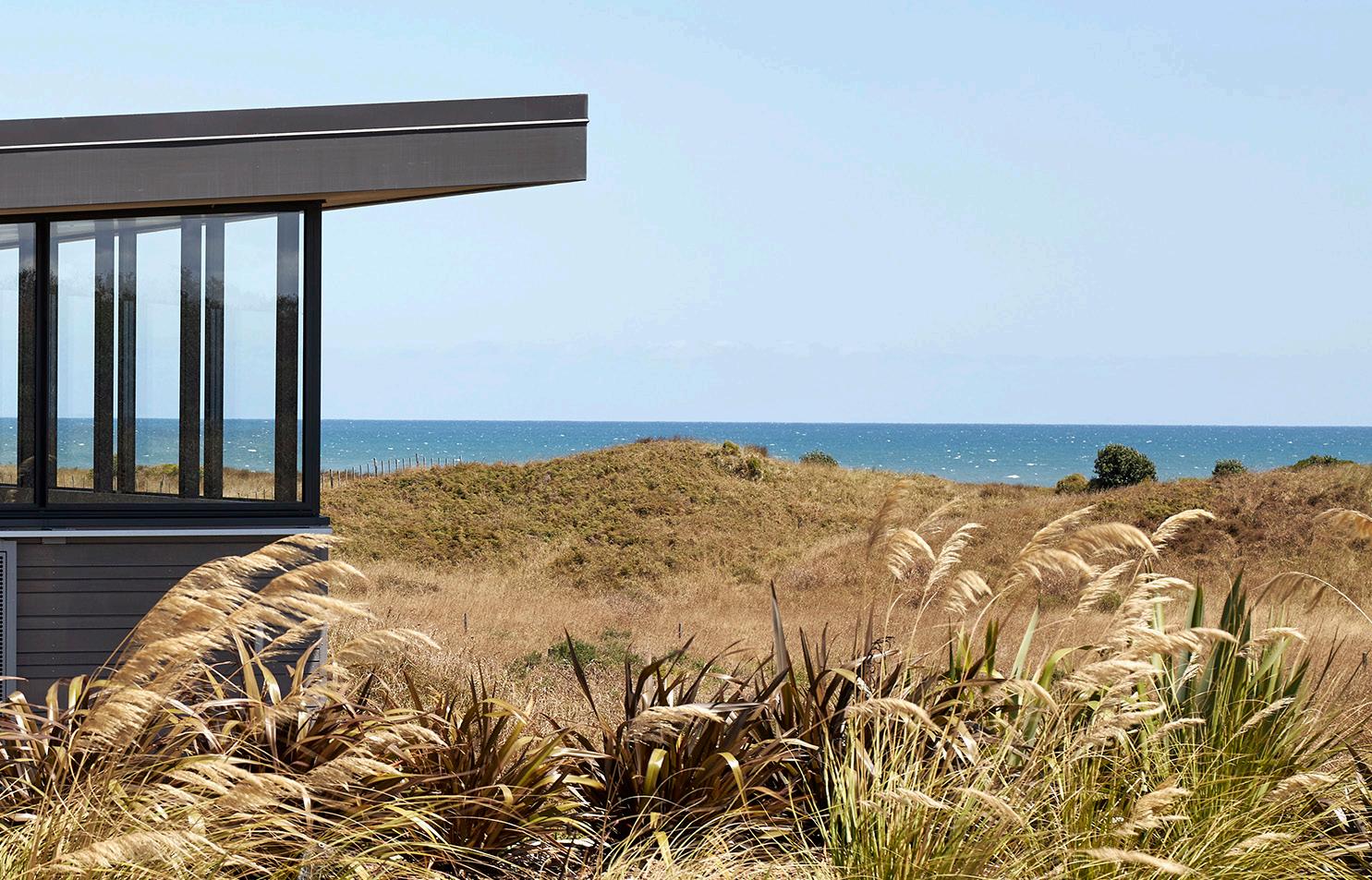
Multi-output allocation generally follows the requirements of ISO 14044, section 4.3.4.2.
Allocation is necessary for APL, since input/outputs (including aluminium extrusions and IGUs) are measured only at the site level. Impacts associated with these inputs/outputs have been allocated on a mass basis, with the assumption that all products require the same share.
Where subdivision of processes was not possible, allocation rules listed in PCR chapter 6.7 have been applied.
No secondary materials were used in the production processes. Allocation for input materials that contain secondary material occurs in the upstream datasets.
End-of-life allocation generally follows the requirements of ISO 14044, section 4.3.4.3.
Landfilling (avoided burden approach): In cases where materials are sent to landfills, they are linked to an inventory that accounts for waste composition, regional leakage rates, landfill gas capture as well as utilisation rates (flaring vs. power production). A credit is assigned for power output using the regional grid mix.
Material recycling (cut-off approach): Any open scrap inputs into manufacturing remain unconnected. The system boundary at end of life is drawn after scrap collection to account for the collection rate, which generates an open scrap output for the product system. The processing and recycling of the scrap is associated with the subsequent product system and is not considered in this study.
The results tables describe the different environmental indicators for each product per declared unit, for each declared module. The first section of each table contains the environmental impact indicators, describing the potential environmental impacts of the product as shown in Table 6. The second section shows the resource indicators, describing the use of renewable and non-renewable material resources, renewable and non- renewable primary energy and water, as shown in Table 7.
The final section of each table displays the waste and other outputs, as shown in Table 8.
The reported impact categories represent impact potentials, i.e., they are approximations of environmental impacts that could occur if the emissions would (a) follow the underlying impact pathway and (b) meet certain conditions in the receiving environment while doing so. The environmental impact results are therefore relative expressions only and do not predict actual impacts, the exceeding of thresholds, safety margins, or risks.
Long-term emissions (>100 years) are not taken into consideration in the impact estimate.
* The results of this environmental impact indicator shall be used with care as the uncertainties of these results are high or as there is limited experience with the indicator.
Impact category
Abbreviation
Climate change – total GWP
Climate change – fossil GWPf
Climate change – biogenic GWPb
Climate change – land use and land use change GWPluluc
Ozone depletion ODP
Acidification AP
Eutrophication aquatic freshwater EPfw
Eutrophication aquatic marine EPm
Eutrophication terrestrial EPt
Photochemical ozone formation potential POCP
Depletion of abiotic resources – minerals and metals* ADPmm
Depletion of abiotic resources – fossil fuels* ADPf
Water Depletion Potential* WDP
Optional environmental impact categories provide further information on environmental impacts.
Table 7: Additional Environmental Impact Indicators * as shown below
Climate Change, IPCC AR5 GWP**
Particulate Matter emissions
Ionizing radiation - human health***
Eco-toxicity – freshwater*
Human toxicity, cancer*
Human toxicity, non-cancer*
Land use related impacts / soil quality*
*The results of this environmental impact indicator should be used with care as the uncertainties on these results are high or as there is limited experience with the indicator.
**This indicator is calculated using the characterisation factors from the IPCC AR5 report (IPCC 2013) and has been included in the EPD following the PCR.
***This impact category deals mainly with the eventual impact of low dose ionizing radiation on human health of the nuclear fuel cycle. It does not consider effects due to possible nuclear accidents, occupational exposure nor due to radioactive waste disposal in underground facilities. Potential ionizing radiation from the soil, from radon and some construction materials, is not measured by this indicator.
¹ The indicator includes all greenhouse gases included in GWP-total but excludes biogenic carbon dioxide uptake and emissions and biogenic carbon stored in the product.
The resource use indicators describe the use of renewable and non-renewable material resources, renewable and non-renewable primary energy and water. Note: Water consumption: The FW indicator in the EPD results tables reports consumption (i.e. net use) of ‘blue water’ (which includes river water, lake water and ground water). This indicator deliberately excludes consumption of ’green water’ (rainwater), as net loss should be interpreted as any additional water loss beyond what would occur in the original, natural system. For plantation softwood forestry, the natural system might be a native forest or a grassland.
Table 8: Life cycle inventory indicators on use of resources
Use of renewable primary energy excluding renewable primary energy resources used as raw materials
Use of renewable primary energy resources used as raw materials
Total use of renewable primary energy resources
Use of non-renewable primary energy excluding non-renewable primary energy resources used as raw materials PENRE
Use of non-renewable primary energy resources used as raw materials PENRM
Total use of non-renewable primary energy resources PENRT
Use of secondary material
Use of renewable secondary fuels RSF
Use of non-renewable secondary fuels NRSF
Total use of net fresh water
Waste indicators describe waste generated within the life cycle of the product. Waste is categorised by hazard class, end-of-life fate and exported energy content.
Table 9: Life cycle inventory indicators on waste categories and output flows
Hazardous waste disposed
Non-hazardous waste disposed
Radioactive waste disposed
Components for reuse
Materials for energy recovery
Materials for recycling
Exported electrical energy
Exported thermal energy
Table 10. Biogenic carbon content
Biogenic carbon content - product
Biogenic carbon content - packaging
EN 15804+A1 Core environmental impact categories aid comparison and backwards compatibility with rating tools.
Table 11: Environmental Impact Indicators in accordance with EN15804+A1
Indicator
Global warming potential
Ozone depletion potential
Acidification potential
Eutrophication potential
Photochemical ozone creation potential
Abiotic depletion potential for non-fossil resources
Abiotic depletion potential for fossil resources
For all products, the following indicators are not relevant, hence result in zero values:
Components for re-use (CRU) is zero since there are none produced
Use of secondary material (SM) is zero since there are none used
Use of renewable secondary fuels (RSF) is zero since there are none used
Use of non-renewable secondary fuels (NRSF) is zero since there are none used
Materials for energy recovery (MER) is zero since no credits are claimed for any incinerated wastes, applying the cut-off approach
Exported electrical energy (EEE) is zero since there is none produced
Exported thermal energy (EET) is zero since there is none produced.

Table 12: Module A1-A3 LCA results based on EN15804+A2 core environmental impact indicators for 1 m2 of APL windows and doors
Table 13: Module A1-A3 LCA results based on EN15804+A2
Additional environmental impact indicators for 1 m2 of APL windows and doors
Table 14: Module A1-A3 LCA results based on EN15804+A2 Resource use indicators for 1 m2 of APL windows and doors
Table 15: Module A1-A3 LCA results based on EN15804+A2 Waste material and
Table 16: Module A1-A3 LCA results based on EN15804+A2 biogenic carbon content for 1 m2 of APL windows and doors
Table 17: Module C1 LCA results based on EN15804+A2 core environmental impact indicators for 1 m2 of APL windows and doors
Table 18: Module C1 LCA results based on EN15804+A2 Additional environmental impact indicators for 1 m2 of APL windows and doors
Table 19: Module C1 LCA results based on EN15804+A2 Resource use indicators for 1 m2 of APL windows and doors
Table 20: Module C1 LCA results based on EN15804+A2 Waste material and output flow indicators for 1 m2 of APL windows and doors
Table 21: Module C2 LCA results based on EN15804+A2 core environmental impact indicators for 1 m2 of APL windows and doors
Table 22: Module C2 LCA results based on EN15804+A2
Additional environment al impact indicators for 1 m2 of APL windows and doors
Table 23: Module C2 LCA results based on EN15804+A2
Resource use indicators for 1 m2 of APL windows and doors
Table 24: Module C2 LCA results based on EN15804+A2
As all window/door waste goes straight to landfill at end-of-life, there is no waste processing involved. Therefore, waste processing impacts have been modelled as zero for this EPD.
Table 25: Module C4 LCA results based on EN15804+A2 core environmental impact indicators for 1 m2 of APL windows and doors
Table 26: Module C4 LCA results based on EN15804+A2 Additional environmental impact indicators for 1 m2 of APL windows and doors
Table 27: Module C4 LCA results based on EN15804+A2 Resource use indicators for 1 m2 of APL windows and doors
Table 28: Module C4 LCA results based on EN15804+A2 Waste material and output flow indicators for 1 m2 of APL windows and doors
Table 29: Module D LCA results based on EN15804+A2 core environmental impact indicators for 1 m2 of APL windows and doors
Table 30: Module D LCA results based on EN15804+A2
Additional environmental impact indicators for 1 m2 of APL windows and doors
Table 31: Module D LCA results based on EN15804+A2
Resource use indicators for 1 m2 of APL windows and doors
Table 32: Module D LCA results based on EN15804+A2
Waste material and output flow indicators for 1 m2 of APL windows and doors
CEN. (2013). EN 15804:2012+A1:2013: Sustainability of construction works - Environmental product declarations - Core rules for the product category of construction products. Brussels: European Committee for Standardization.
CEN. (2019). EN 15804:2012+A2:2019: Sustainability of construction works - Environmental product declarations - Core rules for the product category of construction products. Brussels: European Committee for Standardization.
CEN. (2020). Windows and doors - Environmental Product Declarations - Product category rules for windows and pedestrian doorsets. Brussels: European Committee for Standardization.
EPD Australasia. (2019). Instructions of the Australasian EPD Programme v3.0. EPD Australasia.
EPD International. (2020). Complementary Product Category Rules (c-PCR) to PCR 2019:14. EPD International.
EPD International. (2021). PCR 2019:14, version 1.11 Construction Products. EPD International.
IPCC. (2013). Climate Change 2013: The Physical Science Basis. Geneva: IPCC.
ISO. (2006). ISO 14025: Environmental labels and declarations – Type III environmental declarations – Principles and procedures. Geneva: International Organization for Standardization.
ISO. (2006)a. ISO 14044: Environmental management – Life cycle assessment – Principles and framework. Geneva: International Organization for Standardization.
ISO. (2006b). ISO 14044: Environmental management – Life cycle assessment – Requirements and guidelines Geneva: International Organization for Standardization.
Sphera. (2022). GaBi Life Cycle Inventory Database 2022 Documentation. https://gabi.sphera.com/support/gabi/gabi-database-2022-lci-documentation/
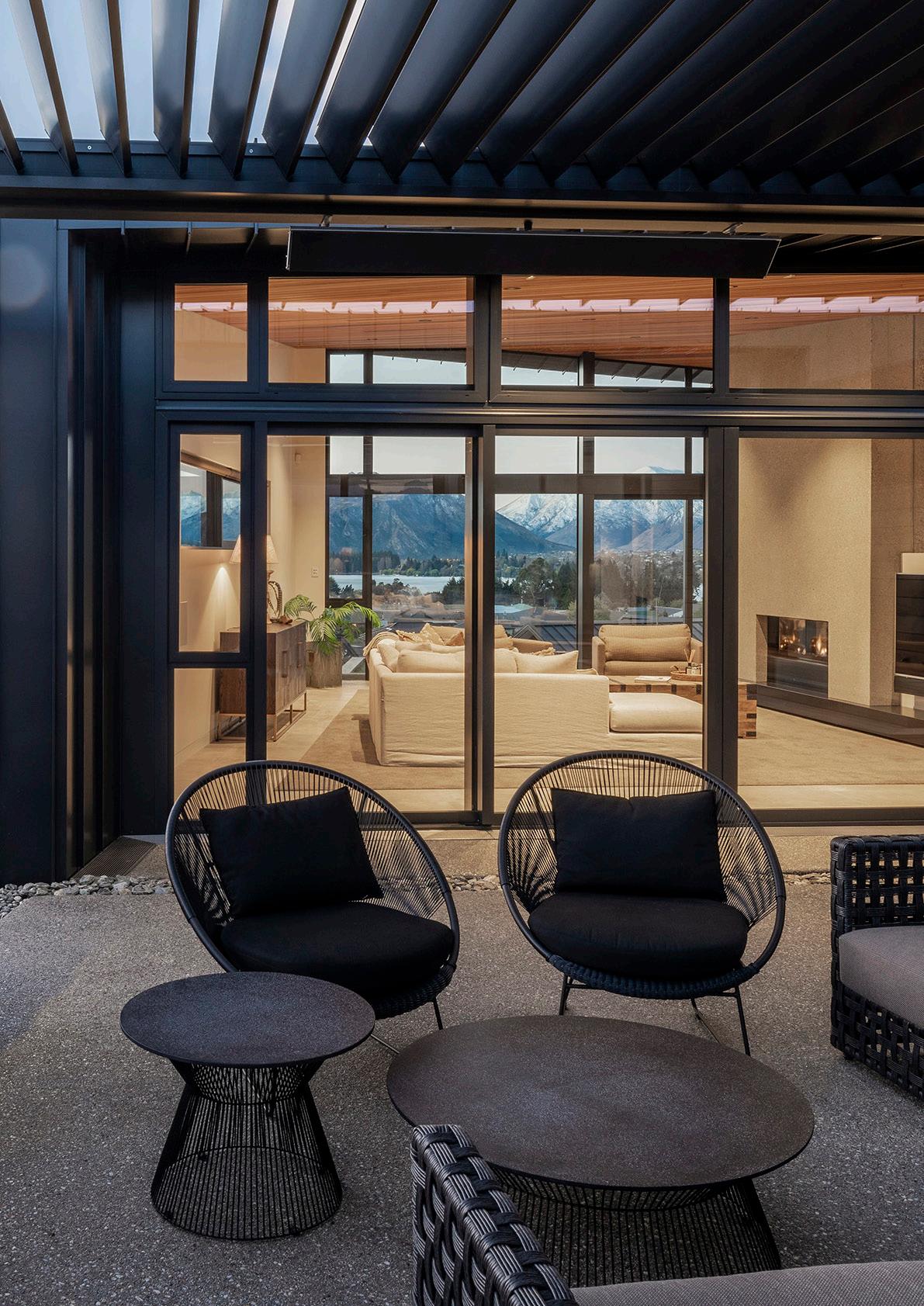
EN15804+A1 Results
Table 33: Module A1-A3 LCA results based on EN15804+A1
Environmental impact indicators for 1 m2 of APL windows and doors


